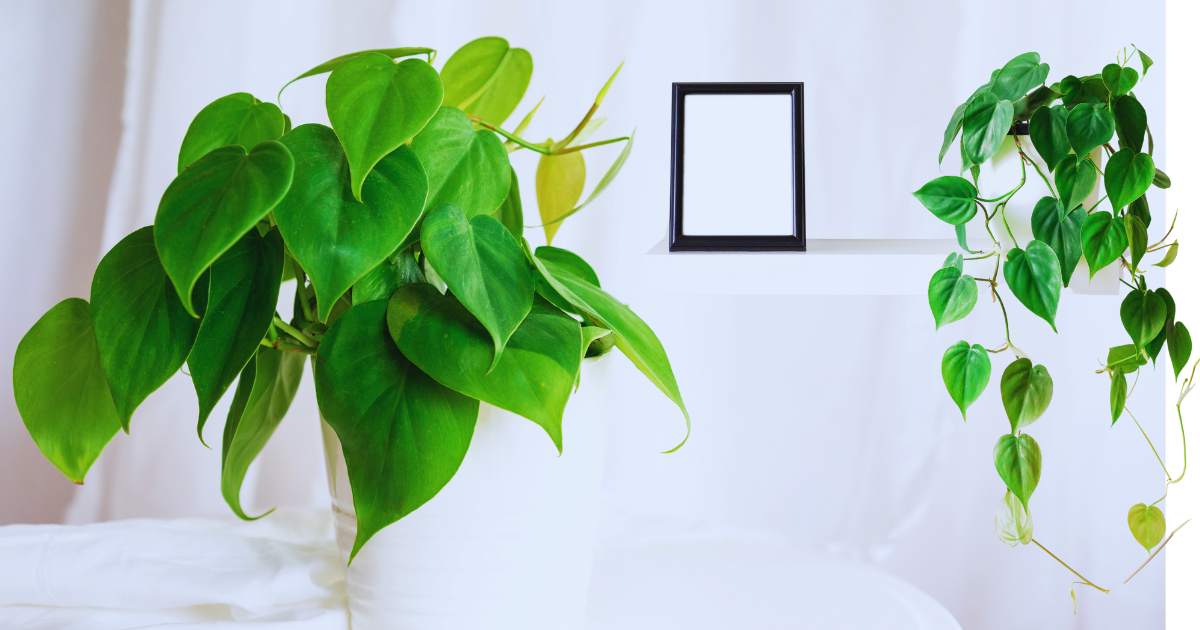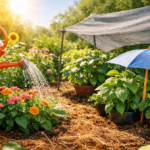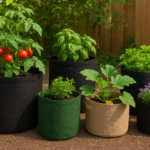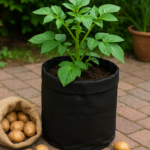The Heartleaf Philodendron, with its vibrant green, heart-shaped leaves, is a favourite among houseplant enthusiasts. It is visually appealing and boasts an easy-going nature, making it an ideal choice for both novice and seasoned plant lovers. Whether you’re looking to add a touch of greenery to your home or want a low-maintenance plant to enhance your indoor garden, the Heartleaf Philodendron is perfect. This guide will provide all the essential care tips to ensure your plant thrives. We’ve covered you, from light and soil requirements to watering schedules and propagation techniques. With attention and the right conditions, your Heartleaf Philodendron will flourish, bringing natural beauty and a refreshing ambience to any space.
Read on to discover everything you need to know to keep this charming plant healthy and happy.
What is Heartleaf Philodendron?

The Heartleaf Philodendron, scientifically known as Philodendron hederaceum, is a popular houseplant cherished for its stunning, heart-shaped leaves and ease of care. Originating from the tropical regions of Central and South America, this plant thrives in warm, humid environments but has adapted well to indoor conditions worldwide.
The Heartleaf Philodendron features glossy green leaves that can grow up to 12 inches long in optimal conditions. Its versatile nature allows it to grow as a trailing vine or be trained to climb structures, making it a versatile choice for home décor. This plant is known for its robust and fast-growing characteristics, making it a favourite among novice and experienced plant enthusiasts.
Apart from its aesthetic appeal, the Heartleaf Philodendron is also known for its air-purifying properties, helping to remove toxins such as formaldehyde. Its low maintenance requirements—tolerance for low light and infrequent watering—make it an excellent choice for those looking to add a touch of greenery without demanding care routines.
Why is the Heartleaf Philodendron Popular?

For several compelling reasons, the Heartleaf Philodendron has earned its place as a beloved houseplant. Its stunning heart-shaped leaves offer a lush, green aesthetic that enhances any indoor space. The plant’s glossy foliage and trailing vines create a natural, elegant look that suits various décor styles, from modern to rustic.
Secondly, the Heartleaf Philodendron is incredibly low-maintenance, making it ideal for novice and experienced plant owners. It thrives in various lighting conditions, including low light, and is perfect for homes with limited natural sunlight. Additionally, it requires minimal watering and can tolerate occasional neglect, bouncing back quickly with proper care.
Another reason for its popularity is its air-purifying abilities. The Heartleaf Philodendron helps remove harmful toxins like formaldehyde from the air, promoting a healthier indoor environment.
History and Origin
The Heartleaf Philodendron, known for its vibrant green, heart-shaped leaves, has a fascinating history and origin contributing to its popularity.
The Heartleaf Philodendron (Philodendron hederaceum), a beloved houseplant, has an intriguing history and origin that traces back to the lush tropical rainforests of Central and South America. This resilient plant thrives in the warm, humid climates of these regions, where it naturally grows as a climbing vine or ground cover, clinging to trees and other surfaces in the dense forest understory.
European explorers discovered the Heartleaf Philodendron in the 19th century during their botanical expeditions. Fascinated by its attractive foliage and adaptability, they brought it back to Europe, where it quickly gained popularity as an ornamental plant. The name “Philodendron” is derived from Greek, where “philo” means “love” or “affection” and “dendron” means “tree,” reflecting the plant’s natural tendency to climb trees. The species name “hederaceum” refers to its resemblance to ivy (Hedera).
Since its discovery, the Heartleaf Philodendron has become a staple in homes and offices worldwide, prized for its low maintenance and air-purifying qualities. Its ability to thrive in various indoor environments has solidified its status as a favorite among plant enthusiasts, making it a timeless addition to any indoor garden.
Types of Heartleaf Philodendron
The Heartleaf Philodendron family includes several varieties, each with unique characteristics that make them special. Here are the main types:
Philodendron Hederaceum
Philodendron Hederaceum is the classic Heartleaf Philodendron variety, well-loved for its vibrant, deep green leaves. This type is highly versatile, thriving in various lighting conditions from low to bright, indirect light. It’s a fast grower, known for its trailing vines that can reach impressive lengths, making it ideal for hanging baskets or training up trellises.
Philodendron Scandens
Philodendron Scandens is often synonymous with Philodendron Hederaceum, but slight differences set it apart. This variety features smaller, more delicate leaves compared to its hederaceum counterpart. Its growth pattern is similarly vigorous, with vines that can be used decoratively around the home. Philodendron Scandens is also adaptable to light conditions and is equally low-maintenance.
Variegated Varieties
Variegated varieties of Heartleaf Philodendron are particularly prized for their unique and striking leaf patterns. These plants feature leaves with white, yellow, or cream variegations, providing a visually appealing contrast to the typical green foliage. Some popular variegated types include:
- Philodendron Hederaceum ‘Brasil’: This variety boasts striking yellow and green variegation, resembling the Brazilian flag, hence the name.
- Philodendron Hederaceum’ Lemon Lime’: This variety, known for its bright, lime-green leaves, adds a pop of colour to any plant collection.
- Philodendron Hederaceum ‘Micans’: Featuring velvety, deep green leaves with a bronze hue, this variety offers a rich and luxurious appearance.
Read to know more : Philodendron Red: Unveiling the Vibrant Beauty of Nature
Philodendron Melanochrysum: A Leafy Marvel
Benefits of Growing Heartleaf Philodendron

Growing a Heartleaf Philodendron offers numerous advantages, making it a popular choice for indoor plant enthusiasts. Here are some of the key benefits:
- Air Purification: The Heartleaf Philodendron is known for its air-purifying qualities. It helps remove toxins like formaldehyde from the air, improves indoor air quality, and contributes to a healthier living environment.
- Aesthetic Appeal: With its lush, heart-shaped leaves and trailing vines, this plant adds a touch of natural beauty to any space. It can be used in hanging baskets, on shelves, or as a climbing plant to enhance home decor.
- Low Maintenance: The Heartleaf Philodendron is incredibly easy to care for, making it ideal for beginners. It tolerates various lighting conditions, requires minimal watering, and is resilient to neglect.
- Versatility: This plant can adapt to various environments and can be grown in pots, hanging baskets, or trained to climb. Its versatility allows for creative and flexible decorating options.
- Stress Reduction: Having indoor plants like the Heartleaf Philodendron can reduce stress and improve mental well-being. Greenery has been shown to create a calming and soothing atmosphere.
- Growth and Propagation: The Heartleaf Philodendron is fast-growing to propagate. You can quickly expand your collection or share cuttings with friends, making growing it a rewarding plant.
- Symbolic Meanings: In Feng Shui, the Heartleaf Philodendron symbolizes growth, prosperity, and health, making it a meaningful addition to your home.
How to Grow Heartleaf Philodendron
Growing a Heartleaf Philodendron is straightforward, thanks to its adaptable nature and minimal care requirements. Here are the key factors to consider:
Soil Requirements
Heartleaf Philodendrons thrive in a well-draining potting mix that retains some moisture without becoming waterlogged. A good mix consists of peat moss, perlite, or coarse sand. Ensure the pot has drainage holes to prevent water stagnation, which can lead to root rot.
Light Preferences
These plants prefer bright, indirect light but can also tolerate low-light conditions. Avoid direct sunlight, especially harsh afternoon sun, as it can scorch the leaves. Ideal locations include near-east or north-facing windows where they can receive gentle morning or filtered light throughout the day.
Watering Needs
Heartleaf Philodendrons prefer consistently moist soil but are susceptible to root rot if overwatered. Water the plant when the top inch of soil feels dry to the touch, typically once a week during the growing season (spring and summer). Reduce watering in the winter months when growth slows down.
Planting and Propagation of Heartleaf Philodendron
Propagation allows you to expand your Heartleaf Philodendron collection or share plants with friends. Here’s how to propagate this versatile plant:
Propagation Methods
The most common propagation method for Heartleaf Philodendron is stem cuttings. This method is straightforward and yields reliable results. It involves taking a section of stem with at least one or two nodes and placing it in water or directly into soil to encourage root growth. Another method requires air layering, where a portion of the stem is wrapped in moist soil or sphagnum moss until roots develop.
Best Time to Propagate
Spring and summer are the best times to propagate Heartleaf Philodendron. During these seasons, the plant actively grows, promoting faster root development. The best time to propagate Heartleaf Philodendron is spring and summer. This period coincides with the plant’s active growth phase, providing optimal conditions for root development. Warmer temperatures and increased sunlight stimulate growth and help cuttings establish roots more quickly. Propagating during these seasons also allows new plants to acclimate and thrive before the slower growth period of fall and winter. By timing propagation correctly, you maximize the chances of successful rooting and healthy growth for your new Heartleaf Philodendron plants.
Step-by-Step Guide
- Prepare Your Tools:
- Sharp, clean scissors or pruning shears
- Small pots or containers filled with well-draining potting mix
- Optional: rooting hormone (not always necessary for Philodendrons)
- Select a Healthy Stem:
- Choose a stem with at least two or three healthy leaves. Avoid stems with flowers or buds.
- Take the Cutting:
- Cut a 4-6 inch (10-15 cm) section of the stem just below a leaf node (where the leaf meets the stem) using your scissors or shears.
- Remove Lower Leaves:
- Carefully remove the lower leaves from the cutting, leaving at least one or two leaves at the top.
- Optional: Dip in Rooting Hormone:
- If using rooting hormone, dip the cut end of the stem into the hormone powder to encourage faster root growth.
- Plant the Cutting:
- Insert the cutting into the prepared potting mix, ensuring the node where the leaves were removed is buried in the soil.
- Watering:
- Water the soil thoroughly to settle it around the cutting. Keep the soil consistently moist, but avoid overwatering.
- Provide Indirect Light and Warmth:
- Place the pot in a warm, bright location with indirect light. Avoid direct sunlight, as it can scorch the cutting.
- Monitor and Maintain:
- Keep the soil moist and mist the cutting occasionally to maintain humidity. Roots should begin to develop within a few weeks to a month.
- Transplanting:
- Once roots have been established (typically indicated by new growth), transplant the cutting into a larger pot with regular Heartleaf Philodendron care.
Propagation of Heartleaf Philodendron through stem cuttings is a rewarding way to multiply your plants and share their beauty with others. Your propagated plants will thrive alongside their parent plants with proper care and attention.
How to Care for Your Heartleaf Philodendron
Caring for your Heartleaf Philodendron involves simple steps to ensure it remains healthy and vibrant. Follow these guidelines for optimal care:
Light:
Place your Heartleaf Philodendron in bright, indirect light for the best growth. It can tolerate low light conditions but may grow slower.
Watering:
Keep the soil consistently moist but not soggy. Water when the top inch of soil feels dry, typically once a week during active growth. Reduce watering in winter.
Temperature and Humidity:
Heartleaf Philodendrons prefer temperatures between 65-80°F (18 and 27°C) and thrive in humid environments. Mist the leaves occasionally or use a humidity tray.
Soil:
Use a well-draining potting mix to prevent waterlogging and root rot. A blend of peat moss, perlite, and orchid bark works well.
Fertilizing:
Feed your plant monthly with a balanced, water-soluble fertilizer during the growing season (spring and summer). Reduce feeding in fall and winter.
Pruning:
Regularly prune to maintain its shape and promote bushy growth. Trim leggy stems just above a leaf node to encourage new growth.
Support:
If you want your philodendron to climb, provide support like a moss pole or trellis. This encourages upward growth and prevents it from becoming leggy.
Pest Control:
Monitor for pests like spider mites and aphids. Use insecticidal soap or neem oil to treat infestations promptly.
Repotting:
Repot every 1-2 years or when the roots outgrow the pot. Choose a slightly larger pot with fresh potting mix.
Common Problems and Solutions
Growing Heartleaf Philodendron is generally trouble-free but can face a few common issues. Here are some problems you may encounter and their solutions:
Yellowing Leaves:
- Problem: Yellow leaves can indicate overwatering, underwatering, or nutrient deficiencies.
- Solution: Adjust the watering frequency to keep the soil moist but not soggy. During the growing season, feed with a balanced fertilizer.
Brown Tips on Leaves:
- Problem: Brown tips usually result from dry air or water high in salts.
- Solution: Increase humidity around the plant by misting regularly or using a humidity tray. Use distilled or filtered water to avoid salt buildup.
Posts:
- Problem: Common pests include spider mites and aphids, which can affect leaves and stems.
- Solution: Use insecticidal soap or neem oil to treat affected areas. Regularly inspect the plant for early signs of infestation.
Root Rot:
- Problem: Root rot occurs due to overwatering or poorly draining soil.
- Solution: Ensure pots have drainage holes and use a well-draining potting mix. Allow soil to dry slightly between waterings.
Leggy Growth:
- Problem: Leggy growth happens when the plant doesn’t receive enough light.
- Solution: Move the plant to a brighter location with indirect light. Prune back leggy stems to encourage bushier growth.
Seasonal Care Tips for Heartleaf Philodendron

Taking care of your Heartleaf Philodendron involves adjusting your routine based on seasonal changes to ensure optimal growth and health throughout the year:
Spring and Summer:
- Light and Temperature:
- Ensure your plant receives bright, indirect light. Avoid direct sunlight to prevent leaf scorching.
- Maintain temperatures between 65-80°F (18-27°C) for optimal growth.
- Watering:
- Increase watering frequency as the weather warms up, keeping the soil consistently moist but not soggy.
- Feed your plant with a balanced liquid fertilizer monthly to support growth.
- Pruning and Maintenance:
- Trim leggy stems and prune to shape the plant. This encourages bushier growth and enhances its appearance.
- Check for pests regularly and treat them promptly if detected.
Fall and Winter:
- Light and Temperature:
- Reduce watering frequency as the plant’s growth slows down. Allow the top inch of soil to dry between waterings.
- Protect the plant from drafts and cold temperatures. Maintain a stable indoor environment.
- Fertilizing:
- As the plant enters dormancy, reduce fertilizing to once every 6-8 weeks or as needed.
- Humidity and Care:
- Increase humidity levels by misting the plant or using a humidity tray, especially if your home becomes drier in winter.
- Monitor for signs of stress or pests and adjust care accordingly.
How to Decorate with Heartleaf Philodendron
Decorating with houseplants can instantly elevate the ambience of any room, and the heartleaf philodendron is an excellent choice for beginners and seasoned plant enthusiasts. Its lush, trailing vines and vibrant green leaves make it a versatile and aesthetically pleasing option. Here’s how you can incorporate this beautiful plant into your home decor:
Hanging Baskets
- Perfect for Small Spaces: Hanging baskets allow the heartleaf philodendron to drape gracefully, adding a touch of nature to any corner without taking up floor space.
- Placement: Hang in living rooms, bedrooms, or bathrooms for a refreshing green touch.
- Tips: Ensure the basket has good drainage and is hung in a spot with indirect sunlight.
Shelves and Bookcases
- Elevate Your Decor: Place heartleaf philodendrons on shelves or bookcases to create a cascading green effect.
- Styling: Pair with books, picture frames, and other decorative items for a balanced look.
- Care: Rotate the plant occasionally for even growth and ensure it’s not too close to the ceiling, where it might get too warm.
Wall-Mounted Planters
- Modern Aesthetic: Use wall-mounted planters for a sleek, contemporary look.
- Vertical Gardens: Combine multiple planters to create a living wall for a dramatic statement.
- Consideration: Make sure the wall can support the weight and choose planters with proper drainage.
Tabletop Decor
- Centrepieces: Use heartleaf philodendrons as centrepieces on dining or coffee tables.
- Grouping: Group with other small plants and decorative items for a charming display.
- Light: Ensure the table receives enough indirect light for the plant to thrive.
Window Sills
- Natural Light: Place heartleaf philodendrons on window sills where they can enjoy bright, indirect sunlight.
- Aesthetic Appeal: The trailing vines look stunning as they cascade down the sides of the sill.
- Caution: Avoid direct sunlight to prevent leaf burn.
Terrariums
- Miniature Gardens: Incorporate heartleaf philodendrons into terrariums for a lush, mini-garden feel.
- Decorative Elements: Add moss, stones, and other small plants to create a vibrant ecosystem.
- Maintenance: Keep the terrarium in a spot with indirect light and maintain proper humidity levels.
Bathroom Greens
- High Humidity: Heartleaf philodendrons thrive in the humidity of bathrooms.
- Placement: Place on shelves, window sills, or even hang from the ceiling.
- Aesthetic: Adds a spa-like, serene atmosphere to the bathroom.
Workspaces
- Productivity Boost: Add a heartleaf philodendron to your workspace for a touch of greenery and a productivity boost.
- Desk Decor: Place on your desk or a nearby shelf to brighten your work area.
- Care: Ensure it’s in a well-lit spot and water regularly.
Outdoor Settings
- Patios and Balconies: Use heartleaf philodendrons in outdoor spaces like patios or balconies.
- Hanging or Standing: Hang in baskets or place in large pots for a lush, green outdoor space.
- Weather: Bring indoors during cold weather to protect from frost.
Climbing Frames
- Vertical Growth: Use climbing frames or trellises to encourage vertical growth.
- Living Art: Create living art by training the vines to climb and cover frames or walls.
- Maintenance: Regularly trim and guide the vines for a neat appearance.
Entryways
- Warm Welcome: Place heartleaf philodendrons in entryways to create a welcoming, green entrance.
- Styling: Combine with other decorative elements like mirrors and lights.
- Light: Ensure the plant receives adequate light, even in entryways.
Bedrooms
- Relaxing Atmosphere: Add heartleaf philodendrons to bedrooms for a calming, natural touch.
- Placement: Place on bedside tables, dressers, or window sills.
- Health Benefits: The plant can help improve air quality, contributing to better sleep.
Living Room Corners
- Filling Spaces: Use heartleaf philodendrons to fill empty corners in living rooms.
- Tall Stands: Place on tall plant stands to create height and dimension.
- Design: Match with other green plants for a cohesive look.
Kitchen Decor
- Functional Beauty: Add heartleaf philodendrons to kitchen spaces to blend beauty and functionality.
- Countertops and Shelves: Place on countertops, shelves, or window sills.
- Light and Care: Ensure the plant receives enough sunlight and water regularly.
Children’s Rooms
- Educational and Aesthetic: Incorporate heartleaf philodendrons into children’s rooms for an academic and decorative touch.
- Safety: Place young children out of reach to avoid accidental ingestion.
- Engagement: Teach kids about plant care and responsibility.
FAQs
- How often should I water my heartleaf philodendron?
- Water when the top inch of soil feels dry. Overwatering can lead to root rot.
- Can heartleaf philodendrons tolerate low light?
- Yes, they can tolerate low light but thrive in bright, indirect light.
- Is the heartleaf philodendron toxic to pets?
- Yes, it is toxic if ingested by pets, so keep it out of their reach.
- How do I propagate my heartleaf philodendron?
- Propagate by cutting a stem below a node and placing it in water or soil until it roots.
- What is the ideal temperature for a heartleaf philodendron?
- They prefer temperatures between 65-80°F (18-27°C).
Conclusion
The heartleaf philodendron is a versatile and low-maintenance plant, making it an excellent choice for adding greenery to any home. Its lush, trailing vines enhance various decor styles, whether in hanging baskets, on shelves or as part of a living wall. Beyond aesthetics, it offers improved air quality and a calming presence. Easy to care for, thriving in indirect light, and adaptable to various settings, the heartleaf philodendron is perfect for novice and experienced plant enthusiasts. Embrace its beauty and simplicity to effortlessly bring a touch of nature indoors.







